Top 11 Most Beautiful Historical Sites in Armenia
This is a list of the most beautiful historical sites in Armenias. Toplist may add an unlimited number of items to this list, but if you're planning a trip to ... read more...Armenia soon, this list should help you figure out what to see!
-
The Armenian Genocide Memorial Complex, established in 1967 on the hill of Tsitsernakaberd in Yerevan, is Armenia's official memorial dedicated to the victims of the Armenian genocide. Thousands of Armenians gather to the memorial every year on April 24, Armenian Genocide Remembrance Day, to remember the victims of the genocide. People gather at Tsiternakaberd to lay fresh flowers in memory of all those who died in the Armenian genocide.
Politicians, artists, singers, sportsmen, and religious icons from all over the world have visited the memorial over the years.
The memorial is located on one of three hills along the Hrazdan River known as Tsitsernakaberd (meaning "swallow's castle"), which was formerly the site of an Iron Age stronghold. Most of the above-ground remnants at this summit have vanished, although there are still indications of a fortress atop the smaller hill. Archaeological studies were conducted in 2007, and excavations found a wall hundreds of meters long that may still be seen from above ground. A stone altar lies in the center of a square at the edge of one of the hills, and massive stones weighing nearly two tons still cover burials from the second millennium BC. Apartments were later erected along the hills during the Roman period, and were eventually covered over with other constructions throughout the medieval period. There are also the ruins of a big cave nearby.
Location: Yerevan
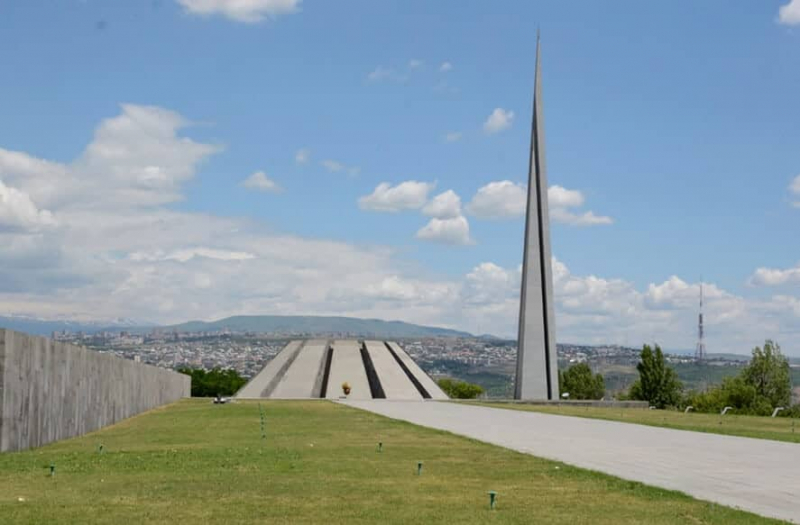
Photo: Armenia Discovery 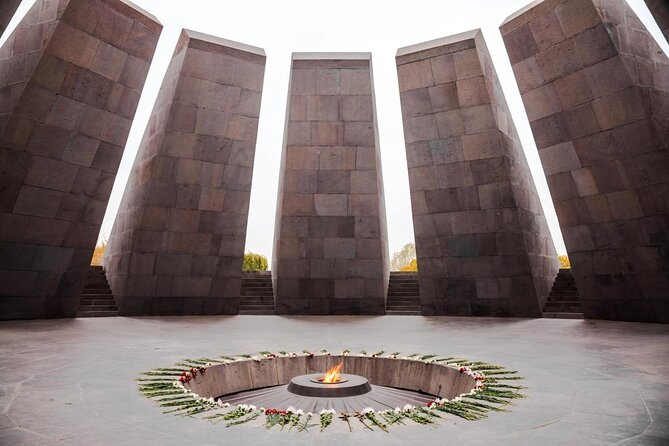
Photo: Viator -
Coming in at number two on the list of the most beautiful historical sites in Amerina is Victory Park and Statue of Mother Armenia.
Victory Park is a public park in the Kanaker-Zeytun District of Yerevan, Armenia's capital. The park's creation began in the late 1930s as the "Arabkir city park," as part of the building of the Nor Arabkir neighborhood to the north of Yerevan, the capital of the Armenian Soviet Socialist Republic. The park was renamed "Victory Park" after the Great Patriotic War to commemorate the Soviet victory over Nazi Germany on the Eastern Front of World War II.
Following the war, the Victory Park was dedicated on November 29, 1950, to commemorate the 30th anniversary of Armenia's Sovietization. On the same day, a 17-meter-high copper statue of Joseph Stalin created by People's Artist of the USSR Sergey Merkurov and a basalt-stoned pedestal designed by another People's Artist of the USSR Rafayel Israyelian was constructed in the park.
The Stalin statue was demolished in 1962 and rebuilt in 1967 by the colossal Mother Armenia statue created by architect Ara Harutyunyan.
Mother Armenia is a feminine embodiment of Armenia. Her most visible visual representation is a massive statue in Victory Park overlooking Yerevan, Armenia's capital city. Mother Armenia is a statue that represents peace through strength. It may remind viewers of some of Armenian history's important female leaders, such as Sose Mayrig and others, who picked up arms to assist their husbands in their confrontations with Turkish forces and Kurdish irregulars. It also reflects the high importance and significance placed on older female members of an Armenian household.
Location: Yerevan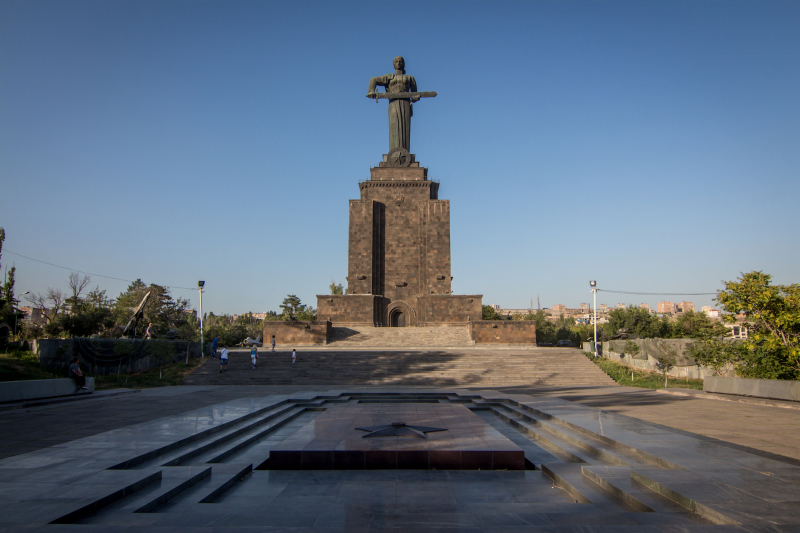
Photo: Monumentalism 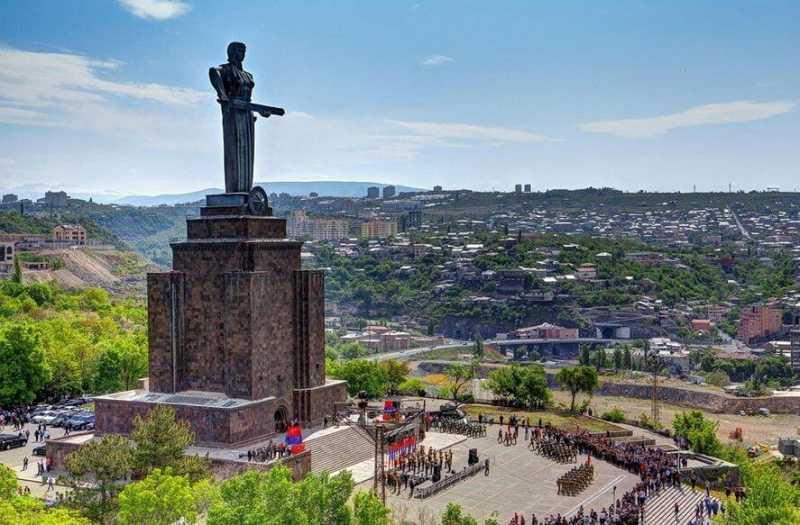
Photo: Amerina Discovery -
Kecharis Monastery is a medieval Armenian monastery complex dating from the 11th to 13th century located 60 kilometers from Yerevan in the Armenian ski resort town of Tsakhkadzor. Kecharis, nestled in the Pambak mountains, was founded in the 11th century by a Pahlavuni ruler, and construction proceeded until the middle of the 13th century. Kecharis was an important ecclesiastical and educational institution in Armenia throughout the 12th and 13th centuries. Today, the monastery has been completely rebuilt and can be seen from the ski slopes.
An earthquake in 1927 severely damaged the domes of the two major churches. The structures were preserved under the Armenian SSR, and reconstruction work began in the 1980s. The 1988 Armenian earthquake, the Soviet Union's fall in 1991, the First Nagorno-Karabakh War, and Armenia's embargo by its two allied Turkic neighbors all contributed to a decade-long standstill in reconstruction. Kecharis' reconstruction work commenced in 1998 and was completed in 2000. Vladimir Harutyunian, an Armenian benefactor from Vienna, paid for the renewed work in remembrance of his parents Harutyun and Arsenik.
Location: Tsaghkadzor
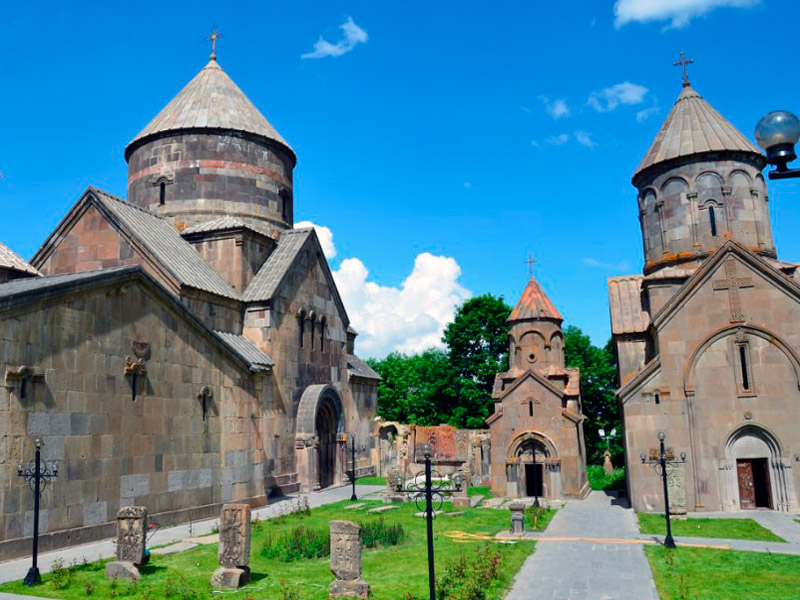
Photo: Arara Tour 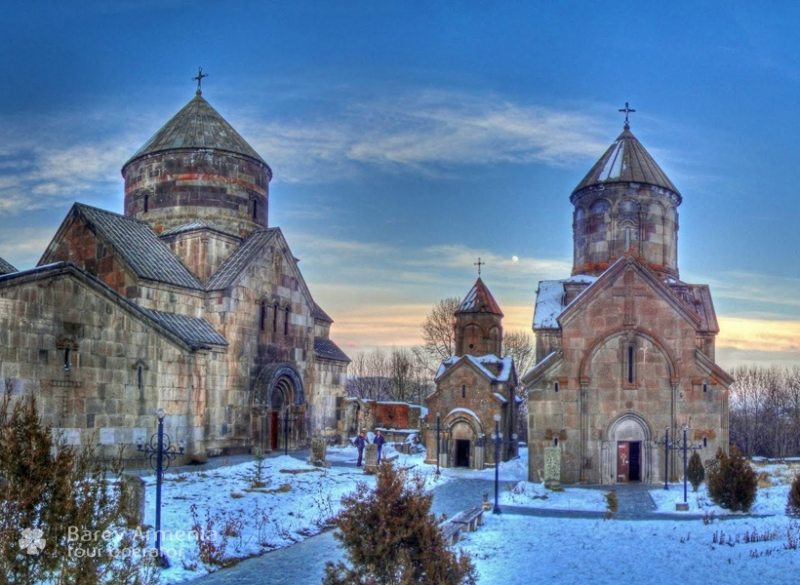
Photo: iArmenia -
Haghartsin is a 13th-century monastery in Armenia's Tavush Province, near the town of Dilijan. It was constructed between the 10th and 13th centuries (in the 12th under Khachatur of Taron), with much of it funded by the Bagratuni Dynasty.
Traditionally, an eagle was soaring above the main building's dome at its dedication, therefore it became known as the monastery of the playing (or soaring) eagle.
The Haghartsin Monastery complex is located high in the wooded mountains, where there are eagles, hence the monastery's name in Armenian translates as "games of eagles." The depiction of this majestic and powerful bird may frequently be found on the walls of Haghartsin. For example, sculptures on the eastern façade of the Surp Astvatsatsin (Holy Mother of God) church portray two monks and an eagle perched on the building's dome.Location: Tavush
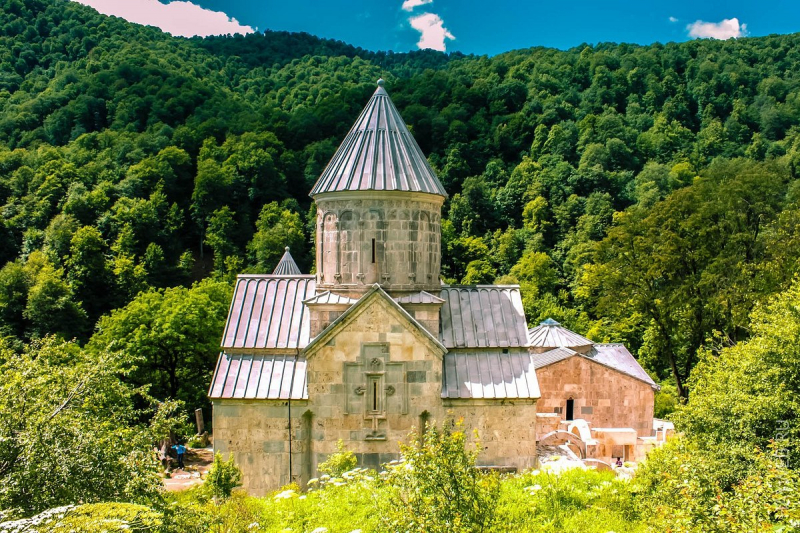
Photo: Tripadvisor 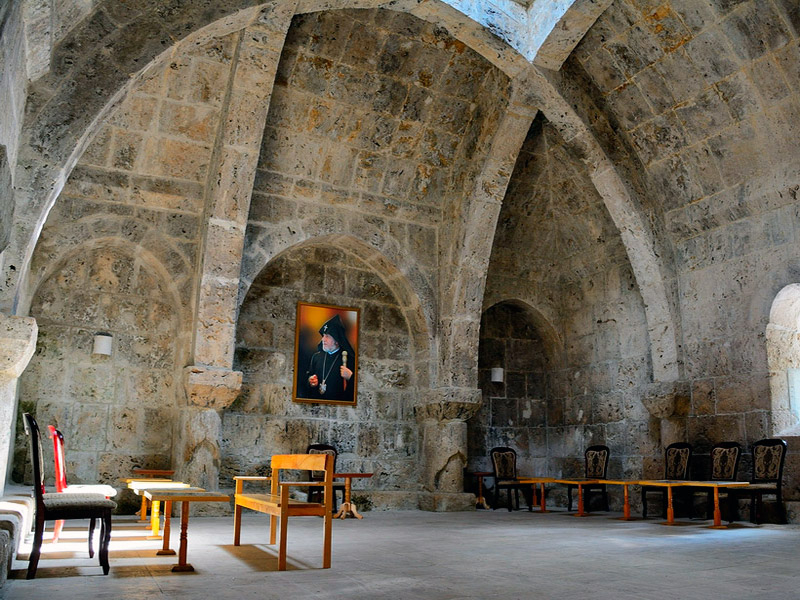
Photo: Arara Tour -
Admire the curves and lofty attitude of the reclining bronze Smoking Woman sculpture in Cascade, a larger-than-life sculpture constructed in the Yerevan Cascade Complex by Colombian sculptor Fernando Botero. The sculpture is part of the Cafesjian Sculpture Garden and is next to a tiny fountain placed along a lengthy stairway in central Yerevan. This woman smoking a thin cigarette is one of three outdoor sculptures in Yereven created by Medelin's father of the Boterismo movement.
One of the reproductions is the Yerevan sculpture. Unlike Botero's other works in Yerevan, this sculpture drew criticism from locals who thought it was strange to see a nude smoking lady in the heart of the city. However, neighbors became used to the statue over time.
Location: Yerevan
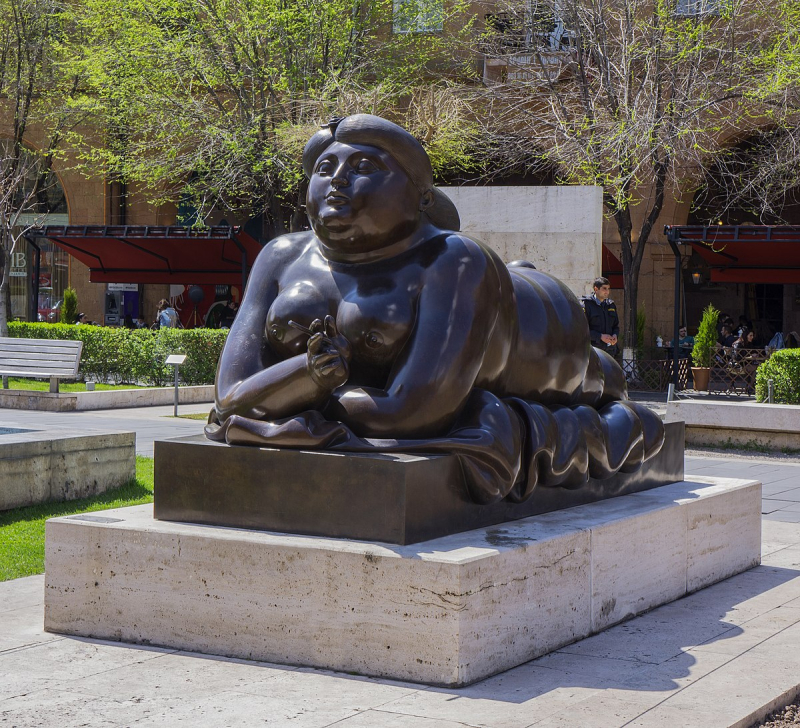
Photo: Wikimedia Commons 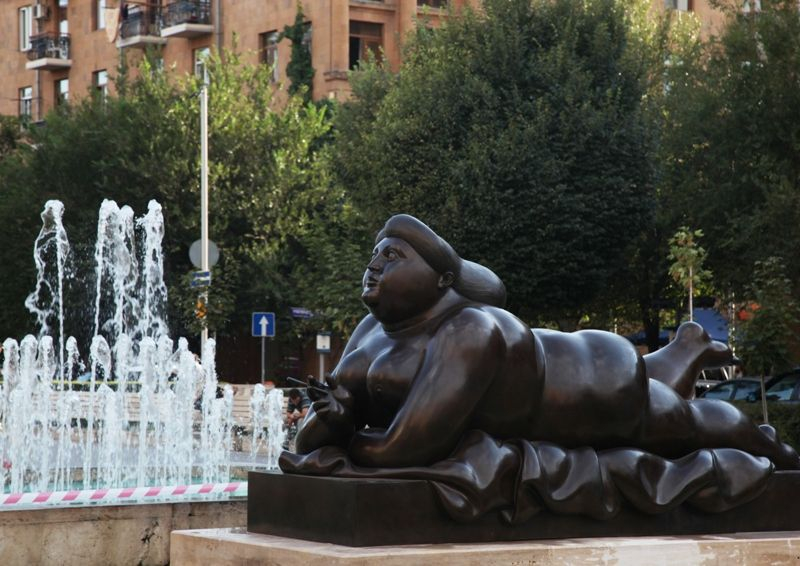
Photo: Pinterest -
The Black Fortress, built in 1834, is one of Gyumri's most famous landmarks. The fortress is a collection of military and architectural structures. The Alexandropol Fortress with three gates lies in the middle, with the St. Alexandra church and the southern and northern fortifications functioning as the General Protection Complex of Alexandropol. Underground roadways were constructed for the Black Stronghold, and pathways connected the fortress to the current Mother Armenia Monument and the Red Fortress. The Black Fortress is one of Gyumri's intangible monuments of history and culture.
The Black Fortress is now on the state's list of historical and cultural sites of national significance.
The history of the castle goes back to Emperor Nicholas I's reign, and the building of the stronghold was finished in 1834. The Russian Empire owned the stronghold, which served as a protective and defensive structure for the city. According to historical records, the demand for a fortification emerged following the conclusion of the Russian-Persian conflict. Given the possibility of conflict with Turkey, the Russians began to focus their efforts on fortifying Gyumri. From the fortification, underground passages leading to the Mother Armenia Monument and the Red Fortress were excavated. The Black Fortress began as a defensive building and later became a military jail. Only after the Russian-Turkish Balkan conflict (1877-1878) did the fortress become a storage facility for guns.
Location: Gyumri
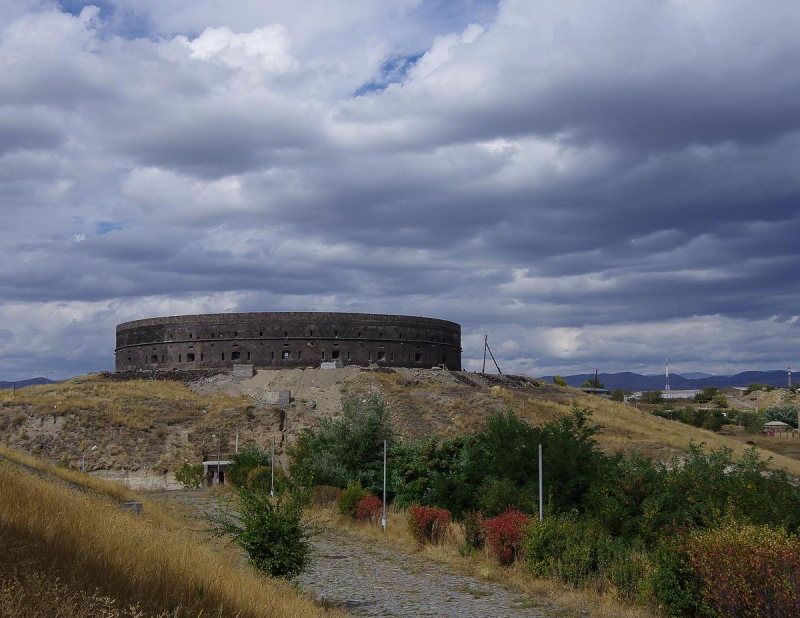
Photo: Tripadvisor 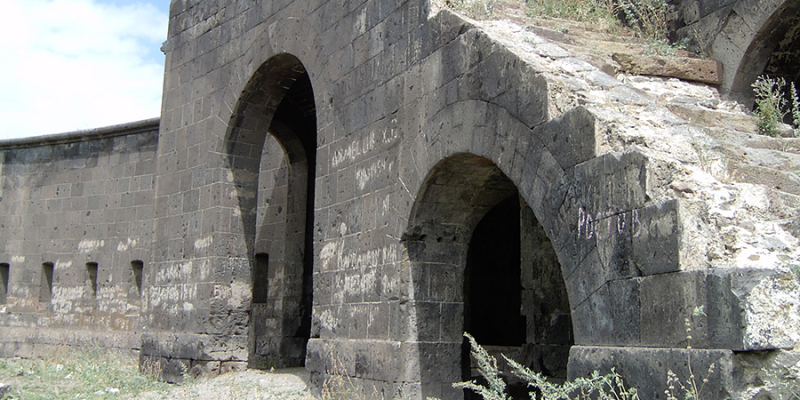
Photo: Visit Gyumri -
The Blue Mosque is a Shia mosque from the 18th century in Yerevan, Armenia. Huseyn Ali Khan, Khan of the Iranian Erivan Khanate, commissioned it. It is one of the oldest structures still standing in central Yerevan and the most important structure from the city's Iranian history. In the nineteenth century, it was the largest of Yerevan's eight mosques.
The mosque was secularized in the 1920s and hosted the Yerevan History Museum for almost five decades. Following Armenia's independence, the mosque was repaired with the help of the Iranian government and reopened as a mosque, serving Iranians in Yerevan.
The Blue Mosque is Armenia's only operating mosque, despite the country's modest Muslim population (between 812 and 1,000 or 0.03 percent of the total population)
Location: Yerevan
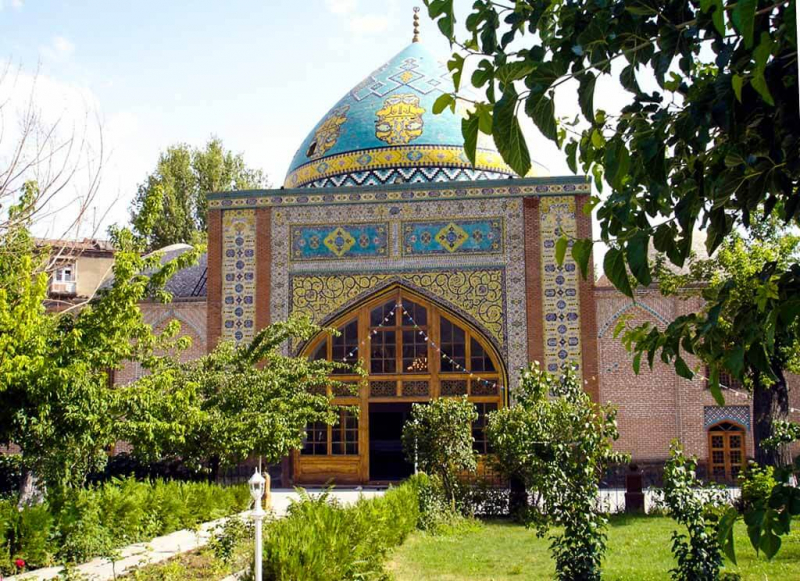
Photo: Travel and Explore 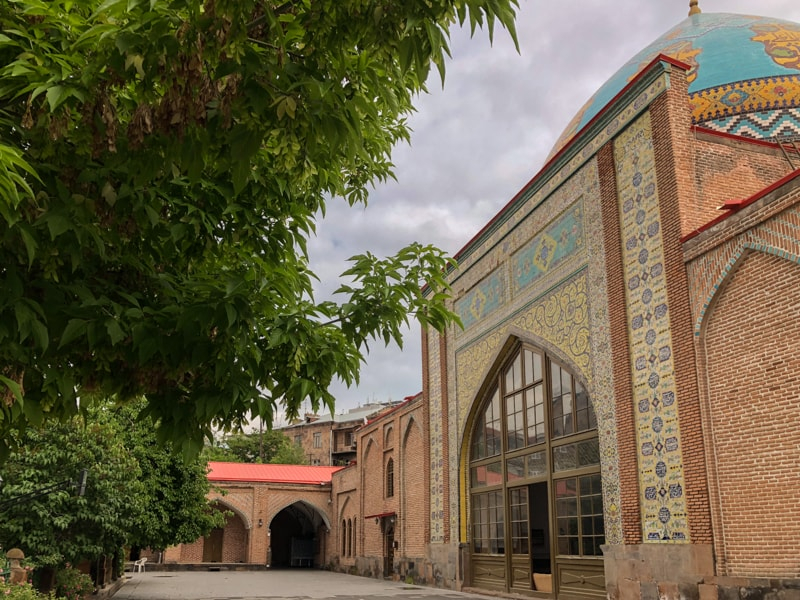
Photo: Travel to Armenia -
Charles Aznavour Square is a tiny square in the Kentron District of Yerevan, Armenia.It is also one of the most beautiful historical sites in Armenia.
As part of the ceremonies marking the 10th anniversary of Armenian independence in 2001, the square was named after the French Armenian musician Charles Aznavour. The area next to Abovyan Street has several notable venues, including the Stanislavski Russian Theatre of Yerevan, the Moscow Cinema, and the offices of the Artists' Union of Armenia. The Grand Hotel Yerevan on Abovyan Street also has a view of the square. Before it moved to its current location, the square also hosted the Yerevan Vernissage.
Location: Yerevan
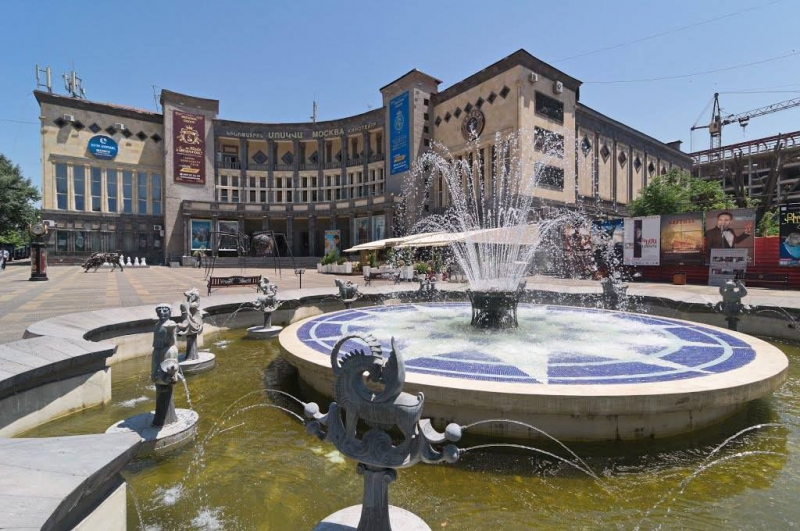
Photo: DookShare 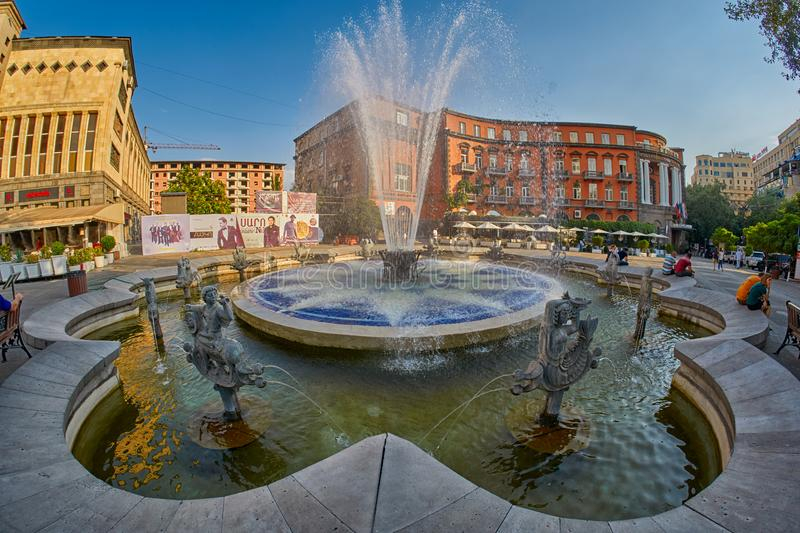
Photo: Dreamstime.com -
Erebuni Fortress, located near Yerevan, Armenia, is a Urartian walled city. It is located 1,017 meters (3,337 feet) above sea level. It was one of numerous fortifications erected along the northern Urartian frontier and was one of the enormous kingdom's most significant political, economic, and cultural centers. Erebuni is the root of the name Yerevan.
Urartian King Argishti I (r. 785–753 BC) established Erebuni in 782 BC. It was constructed on top of Arin Berd, a hill overlooking the Aras River Valley, as a military fortress to guard the kingdom's northern frontiers. It was "planned as a huge administrative and ecclesiastical center, a completely regal capital," according to one account. According to Margarit Israelyan, Argishti began building Erebuni after capturing the lands north of Yerevan and west of Lake Sevan, roughly equivalent to the modern location of Abovyan. As a result, the men and women prisoners he seized during these battles were employed to help build his town.
Location: Yerevan
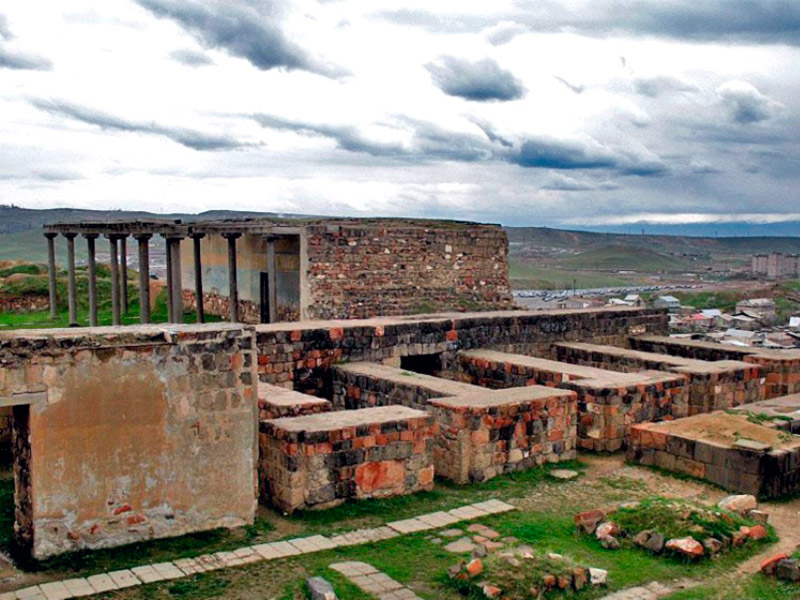
Photo: Arara Tour 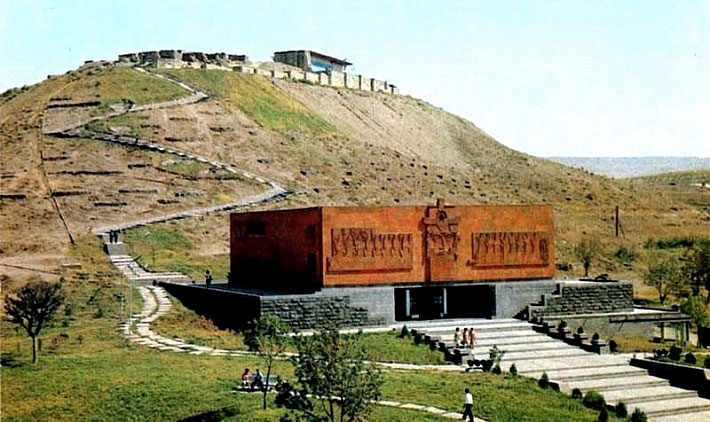
Photo: busvoyage.com -
Garni Temple is Armenia's and the former Soviet Union's sole surviving Greco-Roman colonnaded structure. It is located in the central Armenian town of Garni and was built in the Ionic order. It is the most well-known pre-Christian Armenian edifice and emblem.
The edifice was most likely erected in the first century AD as a shrine to the sun deity Mihr by King Tiridates I. It was turned into a royal summer home of Khosrovidukht, Tiridates III's sister, after Armenia's conversion to Christianity in the early fourth century. Some experts believe it was a mausoleum rather than a temple and hence escaped the demolition of pagan monuments. It was destroyed by an earthquake in 1679. Renewed interest in the site in the nineteenth century led to excavations in the early and mid-twentieth centuries, and its ultimate rebuilding between 1969 and 1975, employing the anastylosis process. It is a major tourist destination in Armenia and the primary shrine of Hetanism (Armenian neopaganism).
Garni Temple is perched on a triangular rock overlooking the Azat River valley and the Gegham mountains. It is a portion of the Garni stronghold, one of Armenia's oldest fortifications, which was strategically important for the protection of the main cities in the Ararat plain. Tacitus' Annals of the First Century mentions it as castellum Gorneas.
Location: Kotayk
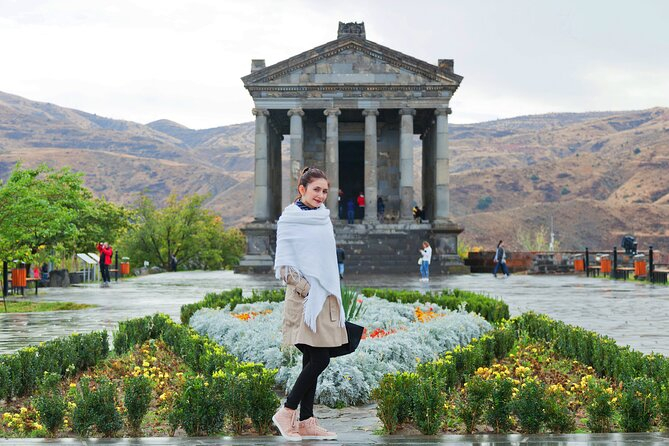
Photo: Viator 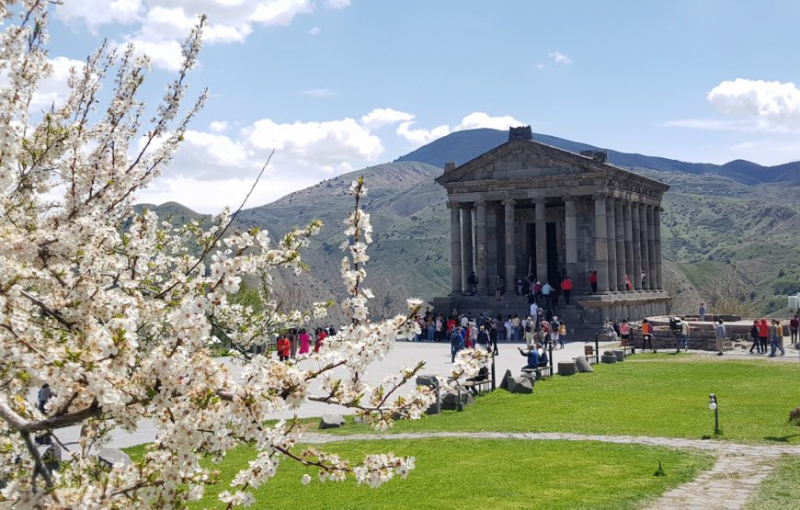
Photo: My Private Tour guide -
Khor Virap is an Armenian monastery located in Armenia's Ararat Plain, near the closed border with Turkey, approximately 8 kilometers (5.0 mi) south of Artashat, Ararat Province, inside the land of ancient Artaxata. The monastery housed a theological institution and served as the home of the Armenian Catholicos.
The importance of Khor Virap as a monastery and pilgrimage place is linked to King Tiridates III of Armenia imprisoning Gregory the Illuminator here for about 14 years. Saint Gregory later became the king's religious adviser, and the two oversaw the country's preaching efforts. Armenia was the first country in the world to be recognized a Christian nation in the year 301. Nerses III the Builder first erected a church on the site of Khor Virap in 642 as a tribute to Saint Gregory. It was renovated several times throughout the ages. The bigger chapel known as "St. Astvatsatsin" (Holy Mother of God) was erected around the ruins of the former chapel, monastery, refectory, and monks' cells in 1662. This church now has regular religious services. It is one of Armenia's most popular pilgrimage locations.
Location: Ararat
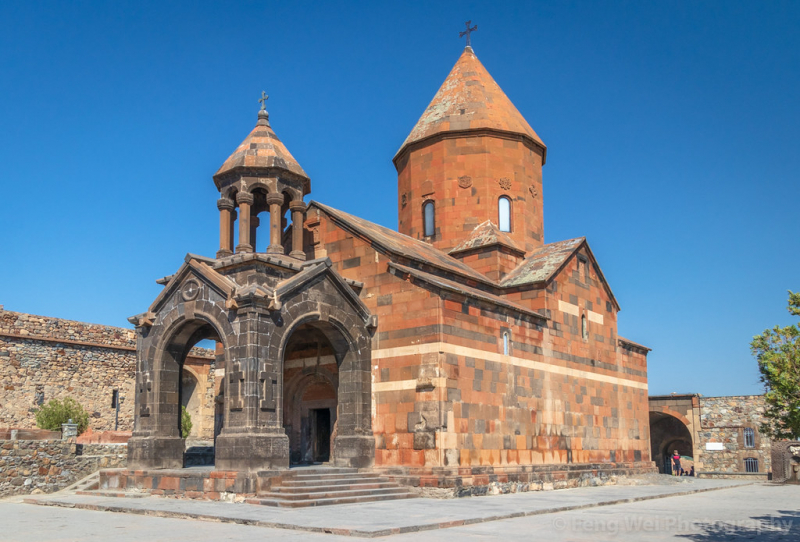
Photo: Flickr 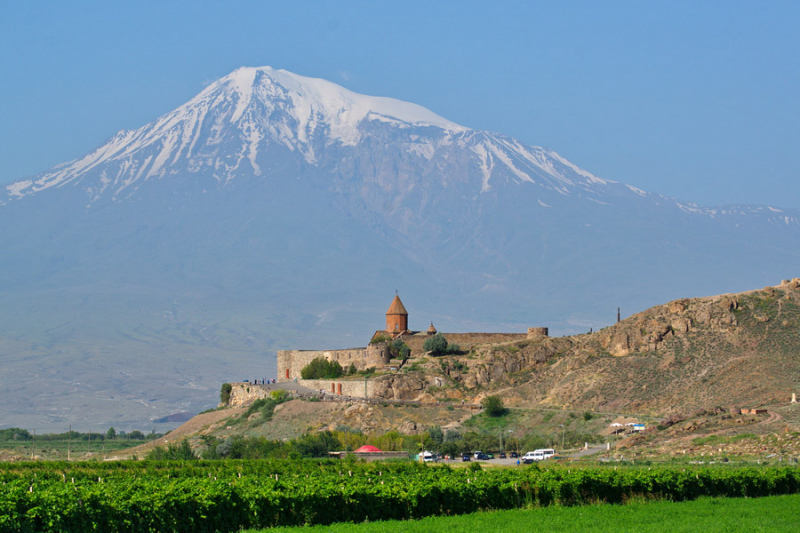
Photo: Advantour
































